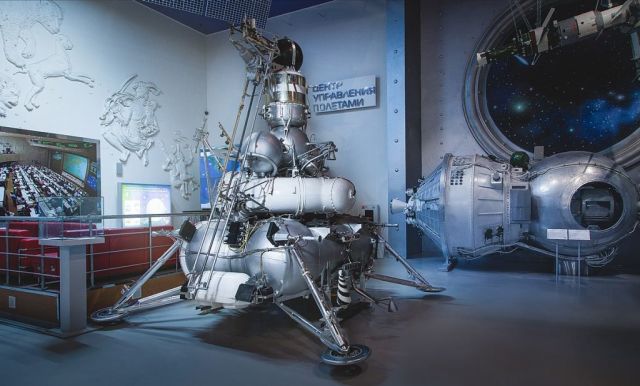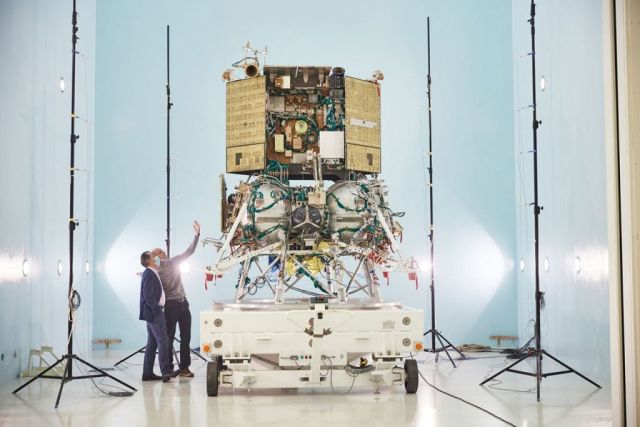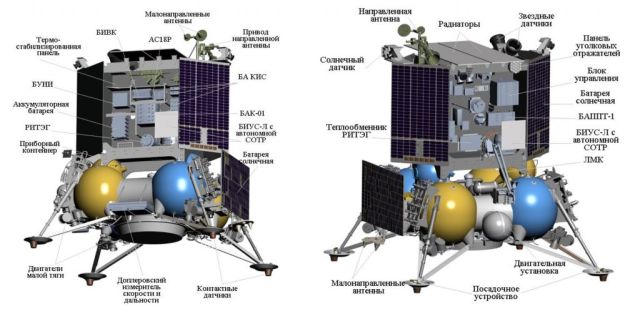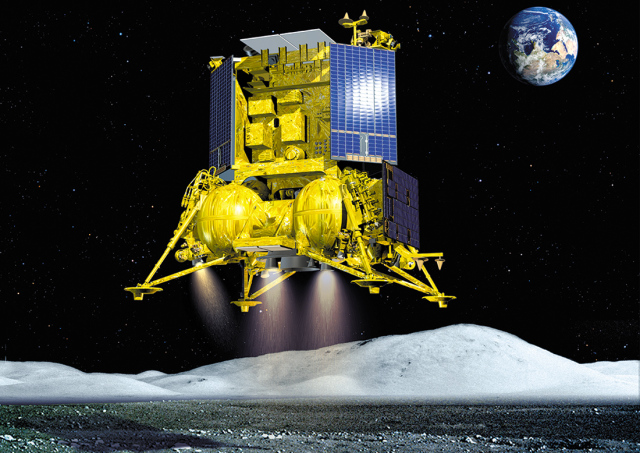International Space Day is celebrated today. According to tradition, various lectures on space will be held in planetariums and observatories on this day, thematic films will be shown. Many events are also held online – with the help of the Internet today you can find out almost all the available facts about the Universe. Well, in honor of the holiday, we are talking about the main space launch of the year – the launch of the Luna-25 spacecraft, in which Rostec enterprises take part. This automatic station will be the first Russian lunar mission in the last half century.
Luna-25 can find answers to many questions related to the evolution of both the Earth's natural satellite and the entire Solar System. However, not only scientific tasks are set by the new mission, but also more practical ones related to the possibility of exploring the Moon in the future. Read more in our material .
Lunar Chronicles
Luna-25 continues the series of Soviet automatic interplanetary stations Luna, which were launched from 1958 to 1976. Russian lunar missions have largely become pioneers in the development of the Earth's natural satellite. For example, in 1959, Luna-3 for the first time showed humanity the reverse side of the Moon, and in 1966, Luna-9 made the first soft landing on a natural satellite of the Earth in the history of cosmonautics and transmitted the first telepanorama of the lunar surface.
About the first–ever photographing of the reverse side of the Moon - in our material
These successes became an incentive for the development of the USSR lunar program. In 1969, a government decree was issued, in which another goal was announced – the delivery of samples of lunar soil to Earth. The Luna-16, Luna-20 and Luna-24 stations successfully coped with this. In total, they delivered 324 grams of lunar soil to Earth. With this, the flights to the Moon of domestic automatic stations were completed. It is worth noting that a big break in the lunar mission is typical not only for our country. Only 37 years after the Soviet "Luna-24", in December 2013, the Chinese "Chang'e-3" landed. Now Russia is also returning to the moon.

Photo: Cosmonautics Museum
The development of the device, which was initially called "Luna-Globe", began in 2005. According to the initial plans, the project was to create a whole network of spacecraft to study the seismic situation on the Moon. Later, it was decided to focus on creating one device, and its main task was to work out a soft high-precision landing on an Earth satellite. Luna-25 should return competence in this area to our country and pave the way for future stations. However, it is possible to single out a more practical task – the delivery of such lunar soil to Earth, which no one has ever brought before.
New mission
As previously reported, the launch of the Luna-25 spacecraft is scheduled for August 22 this year from the Vostochny cosmodrome (the launch window is until October 2022). The flight will last about 4-5 days, and for the first time in history, the device will land not in the equatorial region of the Moon, but in the area of its South Pole, at about 70 degrees latitude. If we compare it with the Earth, then in this place in the southern hemisphere of our planet is the Russian Antarctic station "Novolazarevskaya".
Why such a little-studied landing site, and why are the polar regions of the Moon so interesting? The fact is that it was there that the Russian neutron telescope LAND, installed on the American "Lunar Reconnaissance Orbiter", discovered many different compounds of cosmic origin: from water to complex molecules. Once they flew to the moon with comets. In the permafrost of the lunar pole, as in a large natural refrigerator, they accumulated and persisted for hundreds of millions of years. These are the same compounds that came to Earth 4.5 billion years ago. It is possible that our planet turned out to be more hospitable, and life was born in the Earth's ocean thanks to these small space "guests". Thus, the Luna-25 mission can shed light on issues related to the origin and evolution of the Moon, the Earth and the Solar System as a whole.

Photo: S. P. Korolev RSC Energia
The interest in the polar regions of the Moon is also explained by more applied tasks. It is here that a permanent lunar station may be created in the future. The presence of frozen water will eliminate the need to deliver it from the Ground. Water will also be needed for the extraction of oxygen, and in the future – hydrogen fuel.
Luna-25 is expected to be well "armed" scientifically – the mass of the set of research instruments will be about 30 kg. The main goal is to study the soil by contact method. A special bucket will scoop up the lunar rock from a depth of 15-30 cm and transfer it to an analyzer device, which will determine the composition of the rock right on the spot. Instruments on board the spacecraft will also allow to assess the radiation background and the composition of the Moon's atmosphere.
The main space launch of the year
The landing of the Lunar-25 descent probe will take place according to the scenario of the last Soviet missions. The spacecraft will move in a low polar orbit around the Moon, and then will decelerate and descend vertically.
The soft landing of the station should be provided by a Doppler speed and range meter (DISD-LR) developed by the Vega Concern (part of the Rostec State Corporation's Roselectronics holding). The DISD-LR device is being created in the conditions of import substitution, the developers note.

Infographics: NGO named after Lavochkina
Not only the Vega Concern supplies key instruments for the Luna-25 project, but also some other Rostec enterprises. For example, Obninsk "Technology" for Luna-25 has manufactured more than 80 components, including the housing and lightweight frames of solar panels, radiators of the temperature control system and elements of structural fasteners made of composites.
The refusal of European partners to participate in cooperation on the Luna-25 project will not affect its implementation in any way, Roscosmos is confident. Thus, there is every chance that this year we will witness the launch of one of the most important space missions in recent years. Luna-25 will be the beginning of new lunar missions. The next station "Luna-26" should be engaged in mapping the mineralogical composition of the Moon, the topography of the satellite surface. As part of the Luna-27 mission, a more detailed study of the regolith is planned, and the final Luna-28 mission will have to answer the main question – whether the lunar soil is suitable for the construction of a habitable station and greenhouses.

